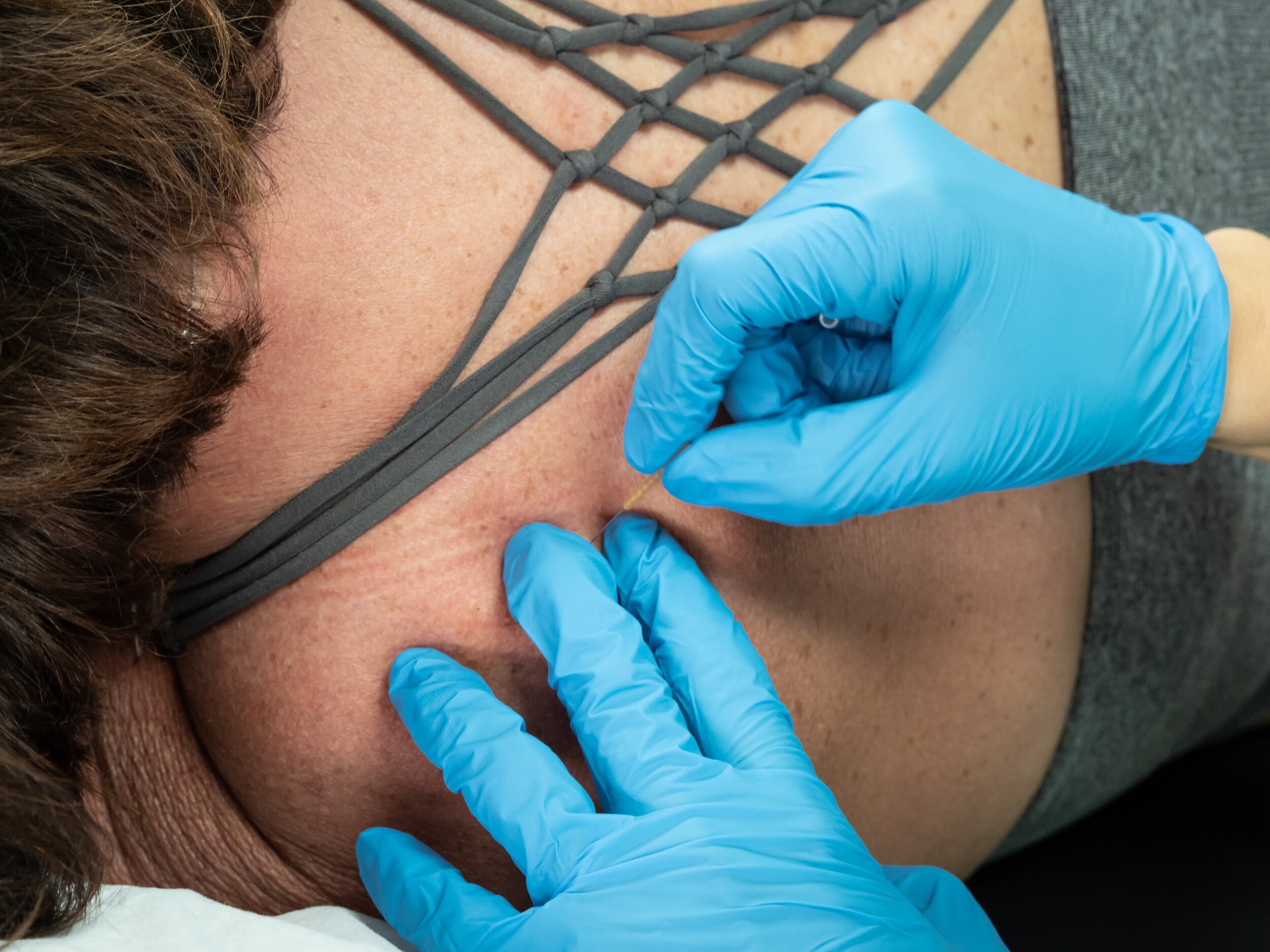Trigger Point Dry Needling
What is trigger point dry needling?
Trigger point dry needling is an intramuscular manual therapy in which a sterile microfilament needle is inserted into the skin and muscle in the area of a myofascial trigger point. Dry needling is a technique FORM Physical Therapists use for the treatment of pain and movement impairments. The technique uses a "dry" needle, one without medication, that is inserted through the skin into areas of the muscle.
Dry needling is not acupuncture, a practice based on traditional Chinese medicine and performed by acupuncturists. Dry needling is a part of modern Western medicine principles and is supported by research [1].
What is a trigger point?
A trigger point is a taut band of skeletal muscle located within a larger muscle group. Trigger points can be tender to the touch, and touching a trigger point may cause pain to other parts of the body.
Why dry needling?
In cases when dry needling is used by physical therapists, it is typically one technique that's part of a larger treatment plan.
Physical therapists use dry needling with the goal of releasing or deactivating trigger points to relieve pain or improve range of motion. Preliminary research supports the claim that dry needling reduces pain and muscle tension [2]. This can help speed up the patient's return to activity.
As part of their entry-level education, physical therapists are well educated in anatomy and therapeutic treatment of the body—physical therapists who perform dry needling supplement that knowledge by obtaining specific postgraduate education and training.
Is the trigger point dry needling procedure painful?
Most patients do not feel the insertion of the needle. The local twitch response elicits a very brief (less than a second) painful response. Some patients describe this as a slight electric shock; others feel it more like a cramping sensation. Again, the therapeutic response occurs with the elicitation of local twitch responses, which is a good and desirable reaction.
What side effects can I expect after the treatment?
Most patients report being sore after the procedure. The soreness is described as muscle soreness over the area treated and into the areas of referred symptoms. Typically, the soreness lasts between a few hours and two days.
What should I do after having the procedure done?
Our recommendations vary depending on the amount of soreness you have and on the individual response to the treatment. Recommendations may include applying heat or ice over the area, gentle stretches, and modifications of activities.
How long does it take for the procedure to work?
Typically, it takes several visits for a positive reaction to take place. We are trying to cause mechanical and biochemical changes without any pharmacological means. Therefore, we are looking for a cumulative response to achieve a certain threshold after which the pain cycle is disturbed.
For more information about our trigger point dry needling in Roswell, GA, and other areas of expertise, please feel free to contact us!
References
1. Cummings MT, White AR. Needling therapies in the management of myofascial trigger point pain: a systematic review. Arch Phys Med Rehabil. 2001;82(7):986–992. Free Article.
2. Kalichman L, Vulfsons S. Dry needling in the management musculoskeletal pain. J Am Board Fam Med. 2010;23(5):640–646. Free Article.


